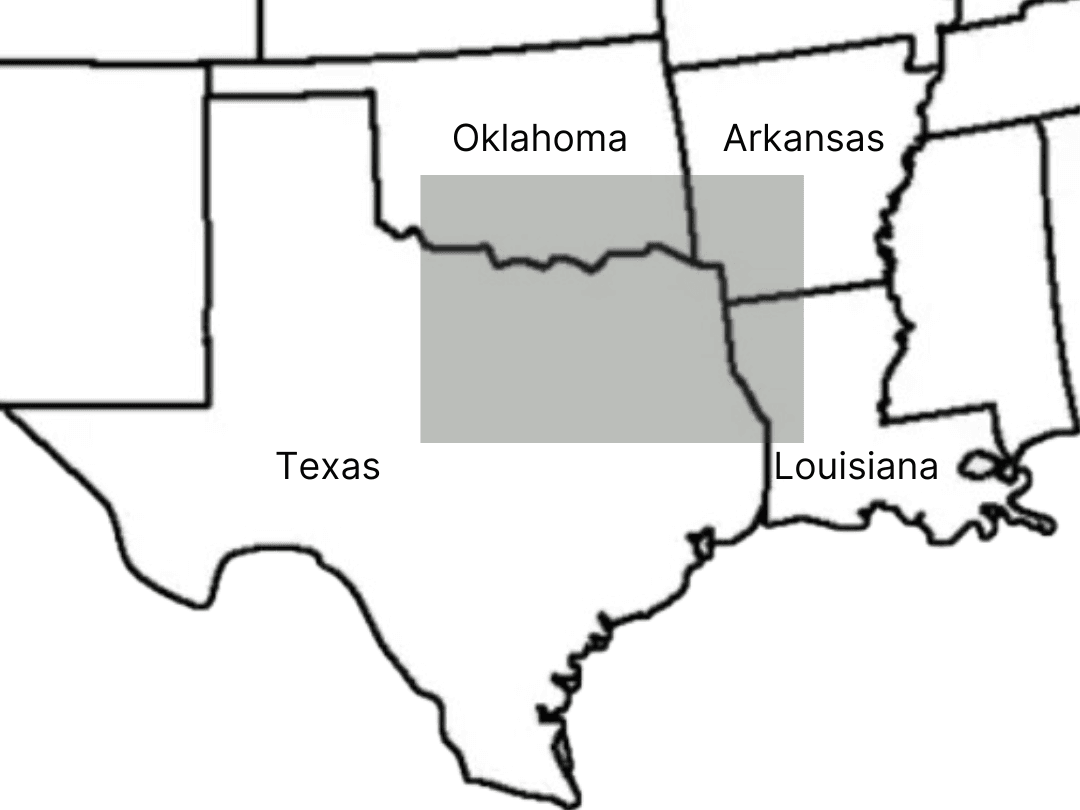
Caddo Indian pottery is a significant aspect of the cultural heritage of the Caddo Nation, a Native American tribe that originally lived in the southeastern United States. Their traditional territory includes areas that are now parts of Texas, Louisiana, Arkansas, and Oklahoma. Their pottery, renowned for its intricate designs and functional artistry, evolved significantly over the centuries and reflected social changes, tribal economic status, and autonomy over time.
Early Beginnings
The origins of Caddo pottery can be traced back to 1300 BC. Early Caddo potters primarily created utilitarian vessels for everyday use, including cooking pots, storage containers, and ceremonial items. The materials used – clay tempered with natural substances like crushed shell or sand – were locally sourced and shaped by hand. These early pieces featured simple geometric designs, often incised or painted with natural pigments. The vessels were formed in coils added to a flat base and smoothed with round river pebbles. This method continued for centuries although design, shape and utilization evolved.
Classic Caddo Periods
As the Caddo society developed, so too did their pottery. By the time of the Caddo’s more complex societal structures, around 800 CE, pottery became not just functional but also a medium for artistic expression. This is indicative of the social group differences, personal design showing interaction between groups, and methods handed down or taught.
The Early to Late Caddo Periods (1000 – 1700 AD)
Often called the Classic Caddo Period, pottery became even more elaborate with potters experimenting with style, design, and decorative techniques. Found sherds demonstrate that pottery was being used for production and trade for salt making. Stylistic design became even more elaborate demonstrating community ceremonial practices for religion and social rituals. Engravings became more elaborate to symbolize natural elements, the underworld, or the heavens.
The archeological study of Caddo pottery is significant for reconstructing the Caddo social structure and economy. By examining the changes in pottery production and style, archaeologists can infer shifts in trade networks and resource availability. For instance, finding Caddo pottery in other regions is evidence of the vast trade networks the Caddo had with neighboring tribes. Pottery remnants, along with their distribution across various sites, help map out Caddoan influence in the Southeastern United States.
For the Texas Caddo today, pottery is more than just an artifact; it is a symbol of resilience. Despite centuries of cultural upheaval, Caddoan people are managing to preserve their pottery-making traditions, often incorporating both ancestral techniques and modern artistic practices. This continuity serves as a testament to the enduring legacy of the Caddo and their ability to adapt, a legacy that lives on in the unique pottery they produced across the ages.
Caddo potter Chase Kahwinhut Earles teaches students how to make Caddoan pottery using traditional methods at a Caddo Mounds State Historic Site workshop in July 2024. The class was supported by a THF grant.
Chase Kahwinhut Earles creates traditional and contemporary Caddo pottery. The collection above is on view in the Dallas Museum of Art. Find out more about Earles' work, advocacy, and outreach at caddopottery.com
Lane Transou
THF director



